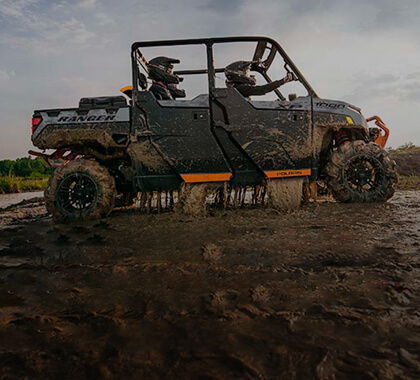What to Look Out for When Buying Polaris Ranger Offroad Short Course Parts?
Do the Suspension
Suspension strain is a reality associated with short course racing as these are all about jumps, avoiding obstacles, sharp turns, and testing the very limits of the driver and the suspension system of the Polaris Ranger.
Therefore, it’s a good idea to upgrade your suspension components, more specifically the shocks, the springs, and the sway bars.
You ought to look for components made out of heavy-duty materials such as steel and aluminum as short course racing is filled with challenges that sure are going to test your suspension system to the highest of degrees.
Do the Tires
The stock tires that come with your Polaris Ranger are not suitable for racing, as they simply can’t provide the level of traction, durability, and handling that you need.
When choosing racing tires, look for tires that are specifically designed for short-course racing.
These tires are typically wider and have more aggressive tread patterns than standard tires, allowing for better traction and stability.
Tire construction is equally as important as you want tires with reinforced sidewalls and beadlock rims to sustain all the hard obstacles you’ll be facing on an offroad short course track.
Safety is Crucial
Short course racing, albeit very entertaining, can also be extremely dangerous which is why you should invest in a sleet of safety and protection upgrades.
Make sure your Polaris Ranger is equipped with a roll cage, racing harnesses, and other safety features that meet the standards of the race series you plan to compete in.
Adding body armor might add a bit of weight, but it could save you from paying thousands of dollars worth of damage.
Experiment
Last, but certainly not least, finding the right setup to suit your personal needs requires lots of trial and error.
Therefore, don’t hesitate to experiment with all the intricacies such as tire pressure, different suspension and damping setups, gear ratios, and throttle response, to name a few.





